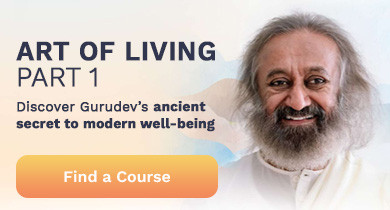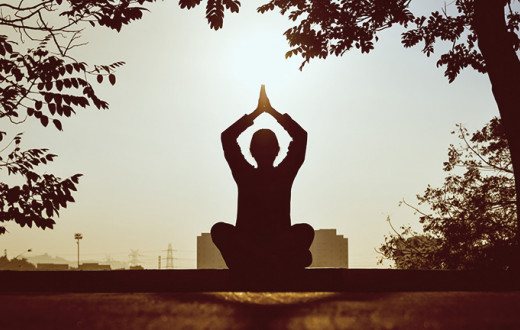By Chris Dale
Can meditation help with insomnia? Yes! Real help for sleep issues is possible with these meditation techniques. Read to learn more.
Insomnia is one of the most commonly reported sleep problems. One in four women has some insomnia symptoms, such as trouble falling asleep, trouble staying asleep, or both. About one in seven adults has chronic (long-term) insomnia. If you are one of those who tosses and turns all night, struggling to fall asleep, you could use a good night’s sleep sooner rather than later. Read on to discover how meditation for insomnia can take you from poor sleep to quality sleep.
What’s insomnia? What causes it?
Are you having difficulty falling or staying asleep? Do you wake up feeling unrefreshed?
Perhaps you’ve noticed that your ability to function effectively is diminished or that you’re feeling tired and irritable much of the time. You may be suffering from insomnia.
Short-term or transient insomnia is quite common and usually resolves by itself. However, insomnia is considered chronic if it persists beyond a few weeks.
Can meditation help in dealing with both transient and chronic insomnia? A resounding yes! There’s an abundance of evidence that regular meditation can improve sleep patterns, often dramatically.
Research indicates that an overly aroused sympathetic nervous system is a significant cause of chronic insomnia. Therefore, practices that reduce nervous system arousal, such as meditation, can be very effective in relieving insomnia.
Many factors excessively arouse our nervous systems:
stress
tension
overindulgence in stimulants such as tea and coffee
use of over the counter and recreational drugs
going to bed late
getting insufficient rest
too much stimulation in the evenings through TV or computer screens
indulgence in dietary habits that don’t suit our constitution
Insomnia often results from mental and emotional stress. Meditation helps by directly relieving the body/mind from stress.
Whilst meditation is a powerful tool to help treat insomnia, we always encourage a multi-layered approach. To treat any problem, we recommend undertaking self-study (Swadhyaya in Sanskrit) to identify any individual causes of the problem. You may never again lie awake for hours after reading this former Insomniac's tips, worth trying!
Maybe you stress out at work, have relationship difficulties, or worry about a sick relative. While you may not be able to change external situations in your life, you can definitely change your reaction to them. Let’s have a look at some things you can do.
Practice Sahaj Samadhi Meditation
Sahaj Samadhi meditation is an effortless practice using a primordial sound or mantra. This technique leads to very deep states of relaxation and provides a wonderful antidote to stress, tension, fatigue, and negative emotional states, to mention only a few examples.
If done for 20 minutes twice a day, morning and afternoon/early evening, it balances the nervous system and provides deeper rest than deep sleep. It is during these periods of deep rest that the body/mind is able to heal itself and reverse the physiological, biochemical, and emotional impacts of stress. By reducing stress and allowing your body to nourish itself, you will find yourself better able to sleep and to sleep more deeply.
Turn on a guided meditation
Guided meditations can also greatly help relieve insomnia. They are convenient and easy to use. You can find guided meditations on a meditation app like the Art of Living’s Journey app available on GooglePlay or Apple.
Here’s an especially nice guided sleep meditation led by Art of Living founder, Gurudev Sri Sri Ravi Shankar which includes breathwork that is also a top tool for better sleep.
Let ‘Yogic Sleep’ lead you to sleep peacefully
Yogic sleep (also called Yoga Nidra) isn’t exactly sleeping, it is a great way to reduce stress and recharge if done during the day. During Yoga Nidra, we systematically take our awareness to different parts of the body while lying down. Although not the original intention, you can try Yoga Nidra right before bed and go from yogic sleep to a peaceful deep state of sleep.
Here’s a Yoga Nidra practice, guided by Gurudev Sri Sri Ravi Shankar.
Do alternate nostril breathing and breath observation meditation
If you find yourself stressed and agitated before bed, or wake up in the middle of the night, try this breathing technique and simple breath observation meditation to help you calm down, soothe your mind, and prepare your body for a good night's sleep.
Here are instructions for alternate nostril breathing :
- Just before sleep, sit comfortably on your bed and take some deep breaths.
- Let your left hand rest palm up on your thigh and bring your right hand up to your nose.
- Gently rest the first two fingers of your right hand between the eyebrows.
- Inhale through both nostrils. Block the right nostril with your thumb and exhale through the left. Inhale through the left nostril.
- Blocking your left nostril with the ring finger gently, exhale slowly through the right nostril.
- Now inhale through the right, block the right nostril with the thumb, and exhale through the left. This is one round. Continue in this manner, switching nostrils before each exhalation.
- It’s important not to strain. Let the breath be very smooth and comfortably slow.
- After about five minutes, finish the last round by exhaling through the left nostril and relax.
You can also use alternate-nostril breathing if you wake up in the middle of the night and can’t get back to sleep.
Here are instructions for a Breath Observation Meditation:
Now relax your arms on your lap and turn your attention to your natural breath.
Give more focus to the outgoing breath.
Easily and without effort, be aware of the outgoing breath and the natural pause at the end of the exhalation.
Don’t deliberately attempt to change the naturally occurring pattern of breath in any way.
Whenever your mind wanders, which it will, very gently bring it back to the exhalation.
Don’t try to concentrate or be concerned if your mind is quite busy.
Continue for 5 minutes up to a maximum of 10 minutes and then relax.
Lie down and enjoy the peaceful feeling.
Learn SKY Breath Meditation for enhanced deep sleep and more:
The beauty of SKY Breath Meditation is how it incorporates rhythmic breath patterns to take you right to the door of meditation. This profound breathing meditation technique reduces serum cortisol (stress hormone) levels by 78%. And significantly decreases both clinical and non-clinical anxiety. It’s no wonder practitioners report not just more normal sleep but enhanced deep sleep and even healthier blood pressure. In addition, SKY decreases PTSD, increases immunity, mental focus, and improves respiratory function.
Summary of tips to alleviate insomnia:
There are a variety of holistic methods you can use to get a good night's sleep. From meditation to breathwork, sleepless nights can be a thing of the past. Here is what we covered today:
A meditation practice twice a day for about 20 minutes – Sahaj Samadhi Meditation or one of the guided meditations led by Gurudev.
Practice Alternate-Nostril Breathing with a 1:2 breath ratio and Breath Observation Meditation or Yoga Nidra before sleeping.
If you wake up in the middle of the night, practice alternate-nostril breathing with a 1:2 breath ratio.
Practice SKY Breath Meditation once a day for 10 to 20 minutes to reduce stress, and anxiety and experience enhanced deep sleep.
Consult a meditation expert for any specific advice tailored to your unique situation.
Ready to take a step towards a great night’s sleep?
If enhanced deep sleep is something you are truly interested in, I would like to invite you to learn more about SKY Breath Meditation. You can attend a free breath and meditation session which will explain more about SKY. You will also get to experience a guided meditation, learn a simple breathwork tool, and of course, ask any questions you might have.
Sweet dreams!
Chris Dale is a Sahaj Samadhi Meditation instructor and Silent Retreat teacher.






























